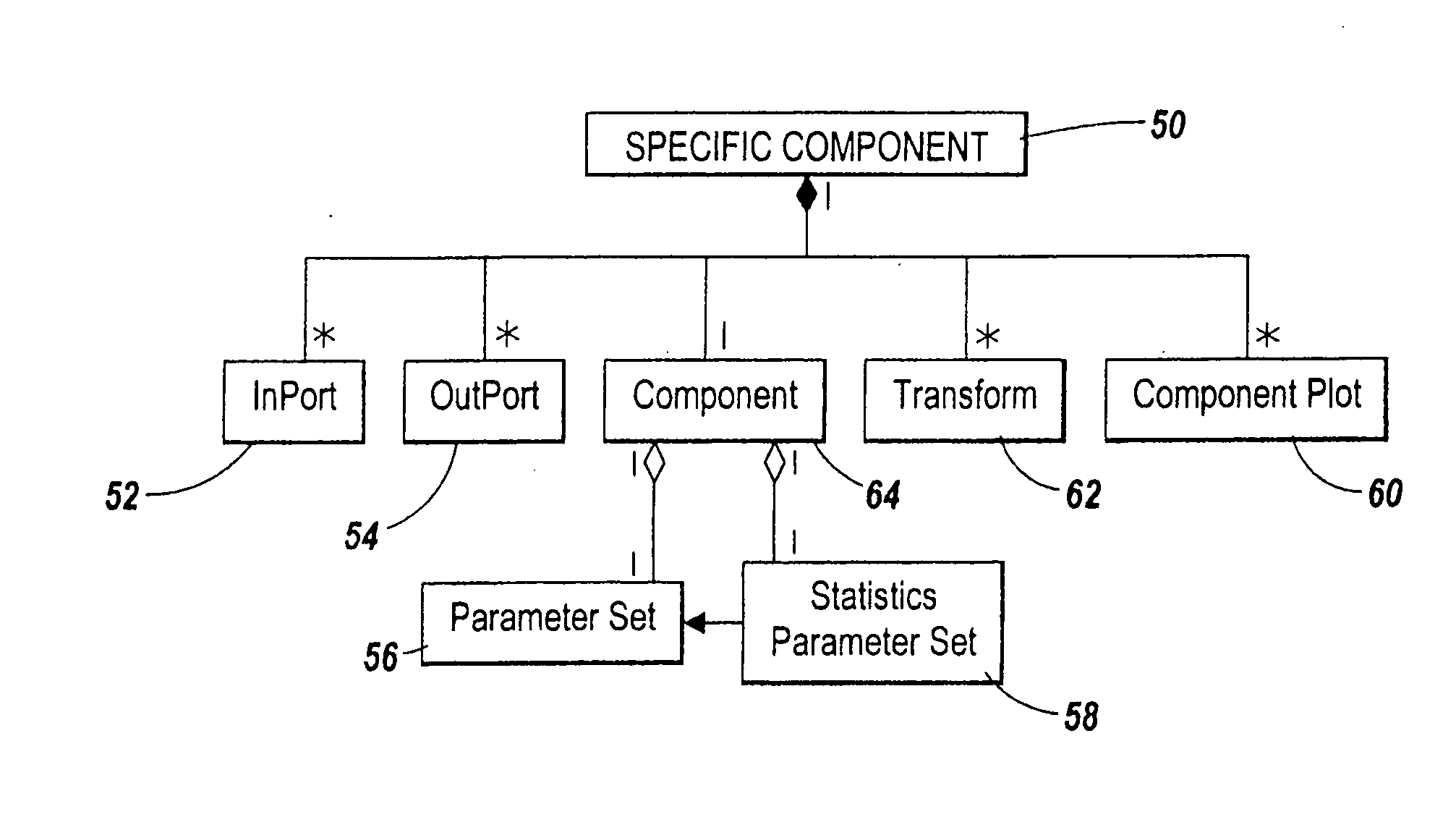Object-oriented component and framework architecture for signal processing
a signal processing and object-oriented technology, applied in the direction of program control, instruments, multi-programming arrangements, etc., can solve the problems of difficult reusing of signal processing applications when converting from one computer module to another, difficult reusing of signal processing software, time-consuming, etc., to achieve high modular and hardware independent, reduce programming work, and minimize equipment costs
- Summary
- Abstract
- Description
- Claims
- Application Information
AI Technical Summary
Benefits of technology
Problems solved by technology
Method used
Image
Examples
example
[0054] Each component developed to be interoperable, is developed by extending the base classes for the input port, output port, component, transform, and plots, and using the parameters class. Referring to FIG. 4, a simple example component, the TMP component is presented. Each of the base classes are extended for the particular specialized additional capability required for the particular component.
[0055] Note: for purposes of illustration, and as one example of a practical embodiment of the subject invention, the C++ language representation for methods is used. Other embodiments of this invention may use other object-oriented programming languages, such as JAVA. The specific method names identified herein are only as an example of one embodiment of this invention.
[0056] With respect to the input port, the base class for the input port is the inPort class. InPort is used by the component writer and is extended for the particular component. In the case of the TMP component, the t...
PUM
 Login to View More
Login to View More Abstract
Description
Claims
Application Information
 Login to View More
Login to View More - R&D
- Intellectual Property
- Life Sciences
- Materials
- Tech Scout
- Unparalleled Data Quality
- Higher Quality Content
- 60% Fewer Hallucinations
Browse by: Latest US Patents, China's latest patents, Technical Efficacy Thesaurus, Application Domain, Technology Topic, Popular Technical Reports.
© 2025 PatSnap. All rights reserved.Legal|Privacy policy|Modern Slavery Act Transparency Statement|Sitemap|About US| Contact US: help@patsnap.com



